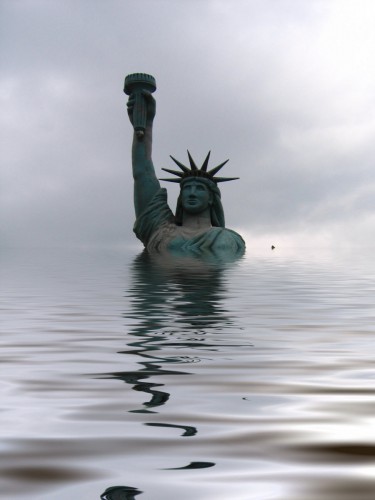 By Debra Chase
By Debra Chase
“The supreme reality of our time is…the vulnerability of our planet.” When President John F Kennedy spoke those on words June 28, 1963 he could not have known that 53 years later the world would be facing unprecedented climate challenges. Nor could he have known that nine years later in 1972, various international bodies would unite to draw up the World Heritage Convention (WHC), in an effort to preserve the best places on earth.
The World Heritage Convention is designed to provide a way for international co-operation to occur to protect cultural or natural places of ‘outstanding universal value’ so that future generations may enjoy them as we do now. Administered by the United Nations Educational, Scientific, and Cultural Organization (UNESCO), the United States played a key leadership role as the first country to ratify the Convention in 1973 and hosted the first session of the World Heritage Committee. It was at this first session that Yellowstone National Park and Mesa Verde National Park were inscribed on the World Heritage List in 1978.
Today there are 21 World Heritage Sites in the US and they include such iconic properties as The Great Kiva at Pueblo Bonito, Chaco Culture National Historical Park, The Grand Canyon, and international treasures such as the redwood trees of Redwood National and State Parks and the Statue of Liberty.
Being a World Heritage Site can provide an added level of protection in the sense that ‘the spotlight of international attention can shine on threats to the site’. Threats can be from heavy pollutants, war or civil unrest and overdevelopment. One challenge to the US participation in the WHC began in 2011 when UNESCO voted to admit Palestine as a member State. U.S. law still holds that if a UN body grants membership to Palestine, the U.S. must suspend payments to that organization. As a result, the U.S. State Department froze all payments to UNESCO, building a large dues debt of approximately $80 million. The World Heritage fund is where developing countries can seek assistance to help preserve their World Heritage Sites. For this reason, the loss of these funds is of concern to UNESCO and other participating countries. The State Departments success in persuading congress to modify the law is still not certain.
What is certain is that the greatest challenge to World Heritage Sites across the globe is climate change. There are just over 1,000 properties in 163 countries worldwide on the list and every one of them is threatened in some way by climate change.
The Union of Concerned Scientists recently released their report on the World Heritage Sites, emphatically stating that, “the impacts of global warming are likely to rapidly and permanently change some of the most important places in the world.” Their report shows that there are 31 World Heritage sites in 29 countries that are already ‘being impacted by climate change and are vulnerable to increasing temperatures, melting glaciers, rising seas, intensifying weather events, worsening droughts, and longer wildfire seasons’. Among those 31 sites are the Statue of Liberty and Yellowstone National Park in the US, Galápagos Islands, in Ecuador and the Great Barrier Reef in Australia.
These sites and others profiled in the report are just the tip of the iceberg concerning those that are most vulnerable to the effects of climate change.
Yellowstone National Park is one of the most diverse parks in our nation. On any given day one can see amazing geysers, grizzly bears, bison, wolves, and spectacular forest landscapes. Along with the beauty is disturbing evidence of climate change. Warming temperatures increased fire damage, reduced the snow pack, and increased pests, all of which will have a catastrophic effect on the landscape, changing the dense forest into open woodland similar to the Southwest. One other such catastrophe is the reduction of the white bark pine populations. Fires and the climate driven beetle infestations are destroying the iconic trees that can live for 1000 years. The trees provide the Grizzly Bear and other species with a critical food source in the high caloric pine nut. Created in 1872 Yellowstone is the world’s first National Park. It forms the core of one of the planet’s last remaining, mostly intact large-scale temperate ecosystems – the Greater Yellowstone Ecosystem. John Steinbeck once remarked that, “Yellowstone National Park is more representative of America than is Disneyland”.
The Statue of Liberty, the most recognized statue in the world and, one of the most puissant symbols of freedom is considerably at risk from the impacts of climate change – most notably sea level rise, and the increased intensity of storms and storm surges. Hurricane Sandy, in 2012 caused extensive damage to facilities and infrastructure, costing millions to repair. During the last 20 years, sea level rise along the Atlantic coast has risen at four times the rate of the rest of the US coast.
The Great Barrier Reef (GBR) stretches 2,300 kilometers along the Queensland coast and includes over 2,900 reefs, and around 940 islands and cays. GBR is dying and dying fast. Coral bleaching has accelerated and many scientists fear that much of GBR has passed the point of being able to regrow itself. An immensely diverse ecosystem, GBR is home to more than 1,500 species of fish, 411 types of hard coral, one-third of the world’s soft corals, 134 species of sharks and rays, six of the world’s seven species of threatened marine turtles, and more than 30 species of marine mammals, including the vulnerable dugong. There are also up to 3,000 mollusks, many thousands of sponges, worms and crustaceans, 630 species of starfish and sea urchins, and 215 bird species. Many more reefs across the planet are bleaching and/or dying because of human caused climate change. The ocean waters are warming too fast and staying warm too long. When this happens, the reefs cannot recover. The economic cost is in the billions, the human and animal cost, immeasurable.
World Heritage properties provide opportunities for both climate mitigation and adaptation in that, protected and preserved forests and coastal habitats can help store carbon and provide vital ecosystem services, including natural protection against storms and floods, such as the reefs provide. The sites are learning laboratories and living libraries for the study and mitigation of climate impacts.
It has been apparent for many decades now that the need to mitigate climate change and its effects is urgent and clear. Greenhouse gas emissions must be reduced and the global temperature must be kept below 2°c, in line with the Paris Agreement, while providing the money, support, and expertise needed to make sure that these and other properties of ecological and economic importance remain resilient and healthy over the long term. Without them, the fate of humanity is uncertain.
WORLD HERITAGE TOP 12
Countries with the most World Heritage listed properties are:
Italy: 49 sites
China: 45 sites
Spain: 44 sites
Germany: 38 sites
France: 38 sites
Mexico: 32 sites
India: 30 sites
United Kingdom of Great Britain and Northern Ireland: 28 sites
Russian Federation: 25 sites
USA: 21 sites
Australia: 19 sites
Brazil: 19 sites





“What is certain is that the greatest challenge to World Heritage Sites across the globe is climate change.”
I would argue there may be greater danger to antiquities/World Heritage Sites from terrorism. Look at the antiquities recently destroyed by the Taliban and ISIS. See: http://news.nationalgeographic.com/2015/09/150901-isis-destruction-looting-ancient-sites-iraq-syria-archaeology/; http://aleteia.org/2015/09/09/12-treasures-of-antiquity-destroyed-in-the-middle-east-since-2001/
Terrorists have limited ability, global warming for example is going to impact the entire world coastline.
I would say terrorism is the more IMMEDIATE threat. Look at the terrible damage already done, just in the last few years.
And dams. http://articles.latimes.com/2003/jun/08/opinion/oe-see8
But terrorism ebbs and flows and is quite limited in scope. Whereas global warming/ climate change is a building threat that is global and massive in scope.
Humanity ebbs and flows, and is a relatively new concept, and limited in scope… whereas climate change is a fact, and has been going on for 10’s of millions of years…
Terrorism has done more harm to heritage sites than any climate change but climate alarmists would like you to think otherwise as it fits their agenda.
BP
“Terrorism has done more harm to heritage sites than any climate change but climate alarmists would like you to think otherwise as it fits their agenda.”
As blaming all on terrorism seems to fit yours. Would it not be reasonable to admit that destructive forces are at work, both natural and man made and both should be addressed ? Does every single issue have to be politically polarizing ?
BP
“Terrorism has done more harm to heritage sites than any climate change but climate alarmists would like you to think otherwise as it fits their agenda.”
As blaming all on terrorism seems to fit yours. Would it not be reasonable to admit that destructive forces are at work, both natural and man made and both should be addressed ? Does every single issue have to be politically polarizing ?
This article didn’t even mention the danger to antiquities from terrorism, and the danger from terrorism is considerably more IMMEDIATE!